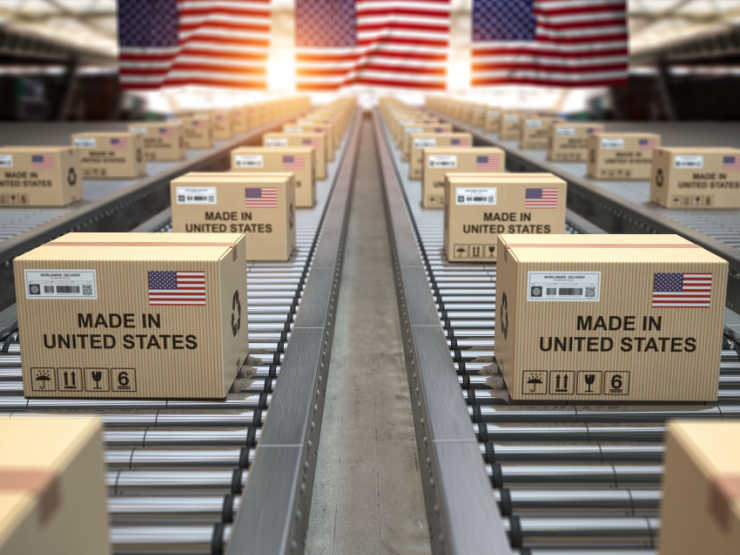
By Maxx-Studio @ Shutterstock.com
After COVID-19 supply chain struggles raised red flags about dependence on imports from China and elsewhere, many companies are building new production facilities in America to retake control of their logistical plans. John Keilman reports in The Wall Street Journal:
Production at U.S. factories rose last year, but few things were produced at a more furious pace than factories themselves.
Construction spending related to manufacturing reached $108 billion in 2022, Census Bureau data show, the highest annual total on record—more than was spent to build schools, healthcare centers or office buildings.
New factories are rising in urban cores and rural fields, desert flats and surf towns. Much of the growth is coming in the high-tech fields of electric-vehicle batteries and semiconductors, national priorities backed by billions of dollars in government incentives. Other companies that once relied exclusively on lower-cost countries to manufacture eyeglasses and bicycles and bodybuilding supplements have found reasons to come home.
The pursuit of speed and flexibility prompted sock manufacturer FutureStitch Inc., which has factories in China and Turkey, to open a new one in Oceanside, Calif., last summer—the company’s first in the U.S.
Chief Executive Taylor Shupe said retailers don’t want to carry excess inventory in their stores, and the U.S. factory allows the company to quickly replenish stock. Time is also of the essence to sell socks commemorating events like the NBA Finals or the Kentucky Derby, he said.
He said the company is keeping its overseas factories but is adding a second in the U.S.—and maybe eventually a third—as it develops new products.
“There is more and more equity around ‘Made in the USA,’ ” said Mr. Shupe. “To me, this is here to stay.”
Manufacturing has always been an integral part of American life. Paul Revere opened a foundry that produced bells and cannons following his famous midnight ride. Henry Ford’s assembly line made cars affordable to the masses. And U.S. industrial might helped win World War II, when nearly half of private-sector employees worked in factories.
That portion plunged after the war, thanks to automation and U.S. companies seeking lower costs overseas. Production capacity, which had grown at about 4% a year for decades, flattened after China’s 2001 entry into the World Trade Organization.
But last year U.S. production capacity showed its strongest growth since 2015 after pandemic-driven shortages and delays caused manufacturers to rethink their far-flung supply chains, said UBS industrials analyst Chris Snyder.
“Covid kind of pulled the covers off and showed everybody how much risk they were exposed to,” Mr. Snyder said.
Read more here.
